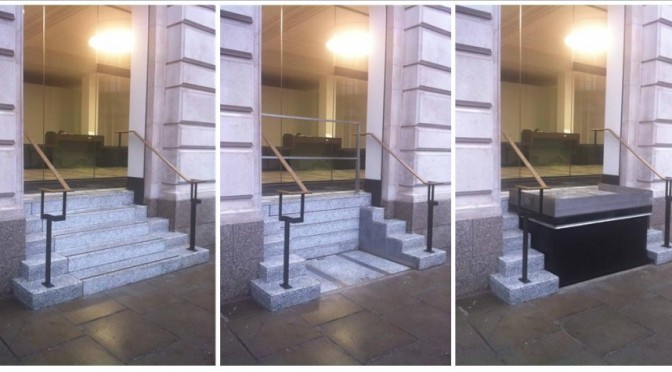An Accessible Historical Property is Essential to Increase Tourism Sales
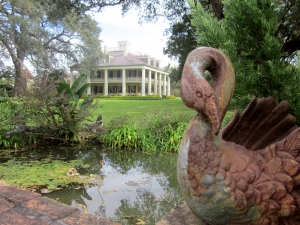
With the +50 Senior population spending 80% of all tourism dollars, having an accessible historical property is essential to engage more tourists and increase sales. In conversations with people who are passionate about preservation, their first concern is ruining the architectural integrity. No one wants that! Please contact us to show you seamless solutions to enhance your accessible historical property.
What do 50+ seniors or a people living with a disability expect when they visit a historical property?
- They want to enjoy visiting historical properties.
- A parking spot close to the venue with plenty of room to get in and out of the vehicle.
- A clean accessible restroom.
- Pathways that are easy to navigate with a cane, walker or wheelchair.
- Water fountain for drinking.
- Ramp access to the main floor levels.
- Clear signage or instructions showing places for accessible access.
- An elevator to access other floors when they are open to the public.
- A video program of spaces that are not accessible.
- Most tourists who live with a disability do not expect to climb a scuttle ladder to a rooftop widows walk.
- They understand that historical properties are often operating on a tight budget and are willing to overlook no access to upper floors if the customer service experience is pleasant and photos or videos are on view.
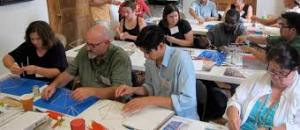
A few years ago, Disability Smart Solutions founder, Susan Berry, spent three weeks studying historical architecture with the Prince Charles’s Foundation For Traditional Architecture.
She learned first hand how historical properties create seamless solutions for accessibility in New Orleans, touring many antebellum plantations, training at the New Orleans Preservation Resource Center, and training at the National Center for Preservation Technology in Natchitoches, Louisiana. Susan Berry, graduate architectural designer, has specialized training through the Institute of Classical Architecture. She understands how to make historical properties accessible without negatively impacting the architecture.
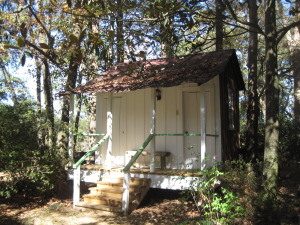
Most historic parks, houses, and properties provide an accessible restroom and drinking fountain in an out building, that is designed in a style compatible to the time period represented. When there are steps to a front porch, many provide an accessible ramp to a side or rear porch entrance. Residential scale elevators that usually require only 6 feet x 6 feet square are added to access upper floors when they can fit. Braille signage is designed in a historical style. There are many seamless accessibility solutions for individual historic properties.
Historical Buildings and The ADA
At Disability Smart Solutions, we believe that a business’s first concern should be the comfort of their patrons. Many historic property owners are confused regarding historic buildings and compliance with the Americans with Disabilities Act.
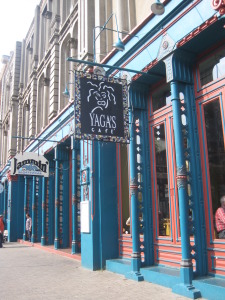
- A historical building IS NOT considered a historic landmark unless it is registered at the federal, state or local level as a historic landmark.
- Accessibility exemptions for historic landmarks under the ADA, are not as significant as often assumed.
Alterations to historical landmark buildings must comply with the same standards as other existing buildings unless it is determined in accordance with defined procedures that compliance with accessibility requirements for accessible routes, ramps, entrances or toilets would threaten to destroy the historic quality of the building.
In this case, then some deviations from the strict standards specified in the law may be used by exception, when it is formally and properly determined that meeting the standard requirements for alterations to buildings cannot be done, in order to preserve the historic nature.
At Disability Smart Solutions, we look for creative ways to meet the code.
- We recognize that historic committees sometimes get “stuck” on changing a building for accessible accommodations.
- We recognize that historical properties often rely on donations and tight budgets.
- We know that an accessible historical property is welcoming to more consumers, thereby increasing visits, customers, and sales.
Sample Historical Project Outline
- Full-service sit-down restaurants might require an additional fee.
- A virtual pre-site meeting with the property owner, property manager, landmark board, architect and/or team.
- Review all existing architectural plans, videos, property information, historical plans, photographs, historical agendas and other relevant documents prior to on-site ADA survey.
- Review a land survey of the property along with applicable local building codes for building setbacks and parking prior to on-site ADA survey.
- Review all local code considerations prior to on-site ADA survey.
- Review the property for both the 2010 ADA Code and the 2012 Florida Accessibility Code for Building Construction.
- Review budgets, long range plans, committee ideas and other significant data prior to on-site ADA survey.
- On-site survey visit by an ADA consultant, with a background in historical preservation, to review all places of public access.
- Photograph all areas where ADA compliance is the law.
- Provide a detailed report with photographs, diagrams, sketches, dimensions, referencing ADA laws per situation, solutions, and resources.
- Provide solutions that are architecturally appropriate for the facility. (Example: if it is a Victorian style building, we recommend Victorian style ADA compliant signage.)
- Provide simple cost effective solutions whenever possible.
- The ADA Consultant has over 30 years of experience in the preservation and hospitality building design, interior design and construction industries, so she can look at your facility and suggest the most cost-effective solutions that blend with the buildings architecture.
- Disability Smart Solutions does not practice architecture. These are ONLY suggestions. All structural changes must be reviewed and permitted by a licensed Florida architect or Engineer.
- Example: We will provide a sketch of a ramp, suggest the location and provide the code requirements, but we do not provide a detailed construction drawing for permitting.
- The report is provided in a digital format for the client to distribute as needed.
- The ADA Consultant has over 30 years of experience in the preservation and hospitality building design, interior design and construction industries, so she can look at your facility and suggest the most cost-effective solutions that blend with the buildings architecture.
- Review policies, amenities, customer service and marketing techniques for Service Dogs.
- Discuss questions and etiquette for serving guests who live with disabilities.
- Follow-up meeting on site with the property owner, property manager, landmark board, architect and/or team to review the report and walk the property.
- Up to 10 E-mails and phone calls coordinating or explaining any possible changes with the client’s architect, engineer, handyman or builder.
Items Not Included
- Architectural drawings for permit construction are not included.
- DSS can recommend a qualified local architect for any required construction documents.
- DSS can review the architectural drawings for design intent and ADA compliance.
- Simple modifications are often made by a handyman based on included diagrams and resources.
- We do not provide construction techniques or instruction.
- Structural modifications must be made by the Clients choice of State Licensed Building Contract. (Costs not included.)
- All structural changes must be made by a State licensed builder.
Additional Services:
- Billed at the ADA Consultants hourly rate. 4 hour minimum for site visits. Travel expenses beyond a 40-mile radius of Downtown Orlando, Florida.
- Site visits to review compliance construction questions.
- Site visits for post compliance audit.
- Review architectural plans for compliance.
- Review construction bids to assure that compliance issues are included in the contract.
Please contact us with information about your property. We will provide a detailed cost estimate for the services required. Services are available throughout the Southeastern USA.
